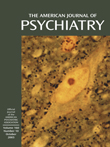Mild Cognitive Impairment: Aging to Alzheimer’s Disease
Clinical investigations in psychiatry, neurology, neuroanatomy, radiology, and psychology have identified a transitional condition between normal aging and Alzheimer’s disease that they have called “mild cognitive impairment.” The chapters in this very interesting book address the range of issues that identify this area of inquiry: clinical studies, cognitive tests, magnetic resonance imaging (MRI), neuropathological changes, biological markers, and clinical evaluation.
Researchers have identified three varieties of mild cognitive impairment. In the amnestic form, the most common, the distinguishing clinical feature is a problem with memory. Patients with multiple-domain mild cognitive impairment are slightly impaired in multiple cognitive domains like activities of daily living and judgment. In single nonmemory mild cognitive impairment, there is mild impairment in executive function (which may lead to frontotemporal dementia) or visuospatial impairment (which may lead to dementia with Lewy bodies).
The criteria used by the Mayo Clinic Research Group to define mild cognitive impairment include the following: 1) memory complaint, preferably corroborated by an informant, 2) objective memory impairment for age and education, 3) largely normal cognitive function, 4) essentially intact activities of daily living, and 5) not demented. Neuropsychiatric studies indicate that depression, personality changes, and paranoid disorders may be harbingers of the onset of cognitive impairment. The criteria of the National Institute of Mental Health Work Group on Age-Associated Memory Impairment for mild cognitive impairment include age at least 50 years old and cognitive test scores one standard deviation below the mean.
Several different modalities are used for clinical imaging, such as MRI, computerized tomography, positron emission tomography (PET), and single photon emission computed tomography (SPECT). In this book the emphasis is on anatomic MRI because this reflects the majority of the published literature. The major pathological features that characterize Alzheimer’s dementia include senile plaques, neurofibrillary tangles, decreased synaptic density, neuron loss, and atrophy relative to age-matched control subjects. The presumed basis of this atrophy is loss of neurons and decreased synaptic density. Measures of atrophy are divided into those assessing hemispheric atrophy and those assessing regional atrophy. Recent interest in MRI has focused on the hippocampus and other medial temporal lobe structures. MRI measurements of the hippocampus and entorhinal cortex differ significantly between control and minimally impaired groups. In other words, there is a close correlation between severity of atrophy and severity of cognitive deficits. PET and SPECT have both demonstrated abnormalities in brain perfusion, specifically in the temporoparietal region, for mildly impaired patients as well as for Alzheimer’s dementia patients.
There is a good discussion of biological markers. Recent work has focused on the amyloid precursor protein in the presenilin-1 and presenilin-2 genes, which predicts Alzheimer’s dementia at specific age ranges. Current work is focused on apolipoprotein ϵ-4 genes, familial forms of Alzheimer’s dementia, CSF and tau protein, plasma and CSF absorption levels, platelet amyloid precursor protein isoforms, iron binding proteins (p. 97), and neural thread proteins.
Neurological and psychological examination should focus on recall of recent events because remote histories are usually preserved in mild cognitive impairment. Mental status instruments like the Mini-Mental State Examination and the Kohmen Short Test of Mental Status are probably the most common. Patients with mild cognitive impairment will often score well on these tests, and this is not inconsistent with mild cognitive impairment. Focus should be on delayed recall, the most sensitive and earliest sign of memory impairment.
Neurological examination should also include examination of other features, including rigidity, bradykinesia, or postural imbalance, with or without tremor, which would suggest an extrapyramidal disorder. Parkinson’s disease, Parkinsonism, or other Lewy body disorder can present with subtle cognitive impairment. If there are visual field deficits or asymmetrical reflexes, mass lesions or vascular accidents would suggest themselves. If a patient has peripheral neuropathy, then toxic or metabolic contributions need to be considered as contributing to the cognitive state.
Finally, a brief discussion of cholinesterase inhibitors suggests that these medications delay symptoms of both mild cognitive impairment and Alzheimer’s dementia for about 6 to 9 months. The dosing of cholinesterase inhibitors is limited by gastrointestinal side effects, but maximal doses appear to be most beneficial. The results from cholinesterase inhibitors generally show some cognitive improvement and a lack of functional decline.
For those who work with geriatric patients, this is a very interesting volume. As a clinician, I found it very instructive.



